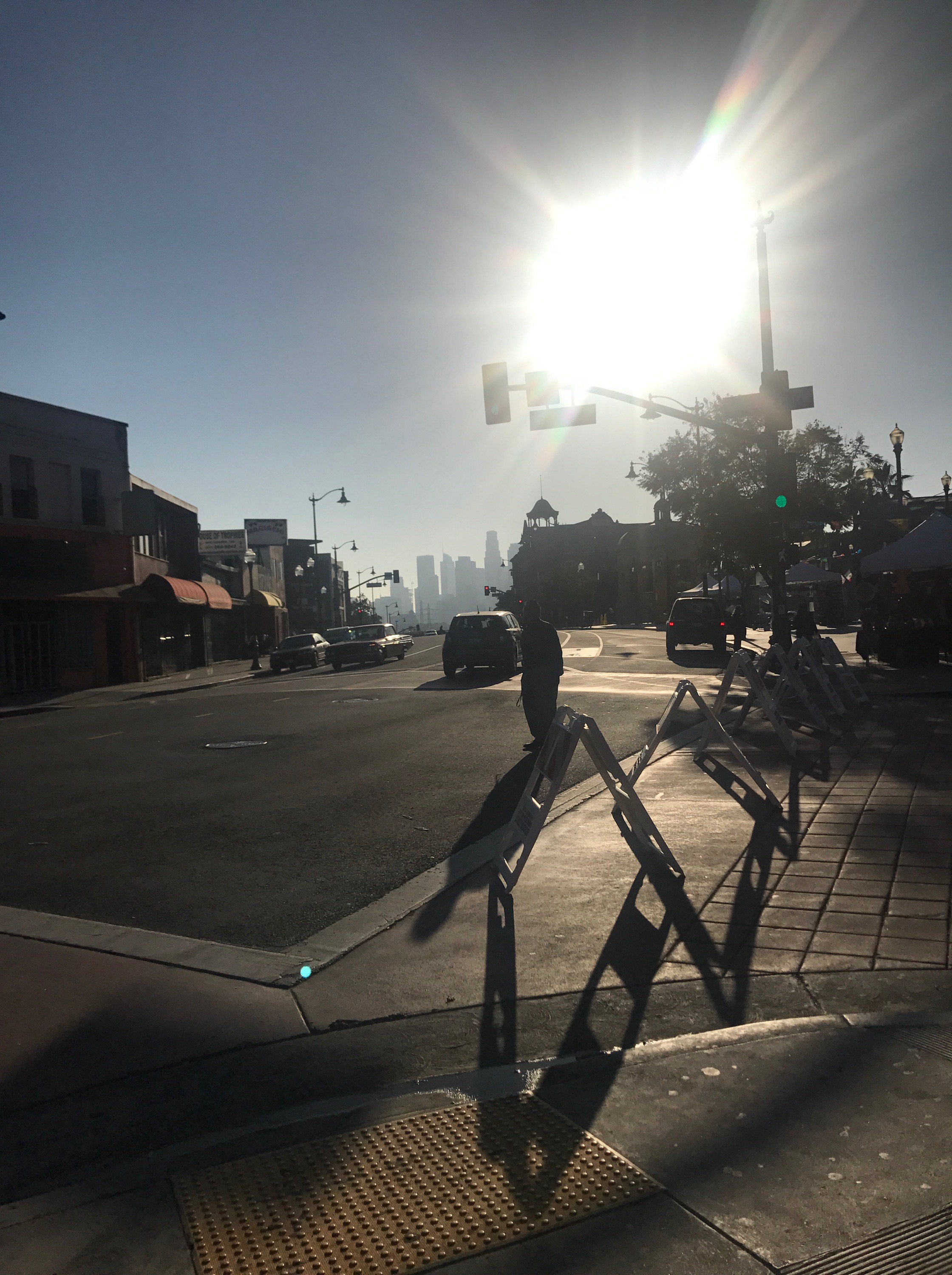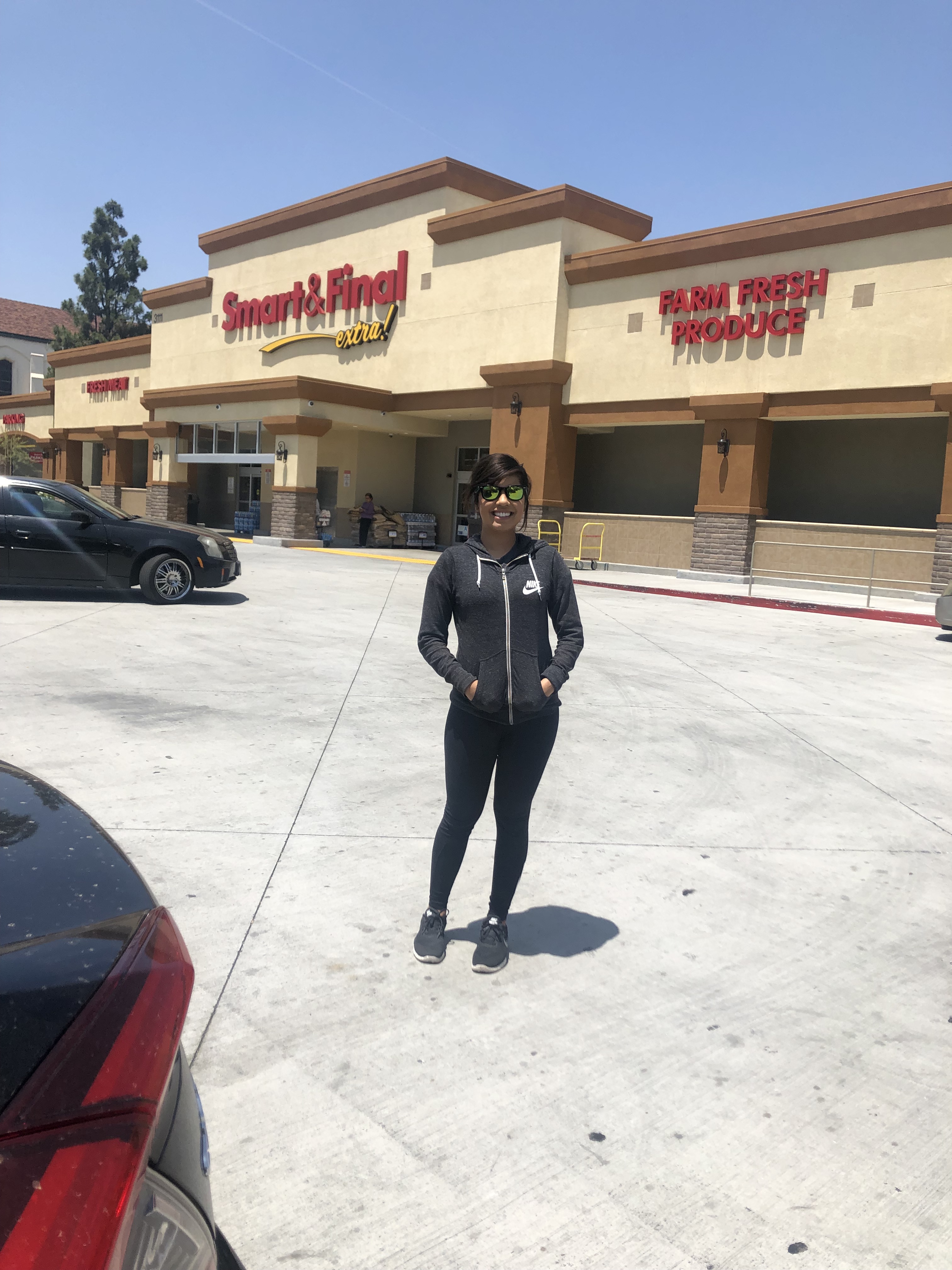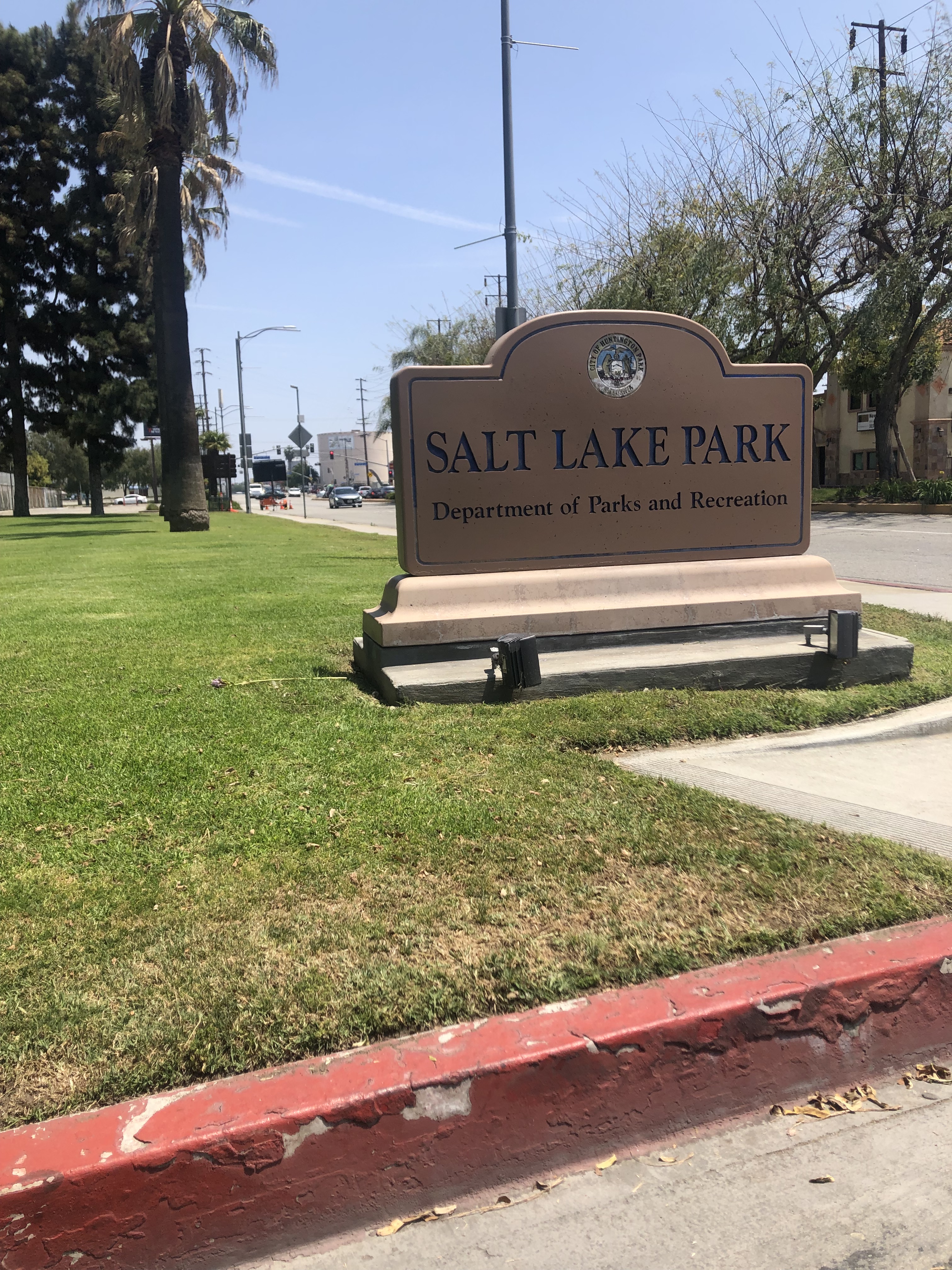Introduction

Los Angeles for all its powerhouse economy, it sure does not tell much of the story of poor and working class people of color in its Hollywood films. Embedded in this city is the story of its inhabitants with ties towards low socio-economic status and the battle for access to healthy food distribution. Of the isolation amongst the working class and poor people of color in Los Angeles, access to healthy food distribution is a major struggle. Although, there has been a renaissance in the farmer’s market movement in Los Angeles; many low-income communities lack access to fresh fruits and vegetables. Food deserts: people living in these communities often lack access to fresh, and unprocessed foods. (Ortega, Albert, Sharif, Langellier, Garcia, Glik, Brookmeyer, Chan-Golston, Friedlander, Prelip, 2014) Food swamps: communities with disproportionate amount of unhealthy food venues and choices. (Ortega, et al 2014) Urban food deserts and swamps allocated in the greater Los Angeles areas among working class and poor people of color contributes to rapid disease and great numbers of obesity. Although, the fight for healthy food access via supermarkets or corner stores are represented disproportionately, underprivileged Angelenos find themselves at the mercy of food desert and food swamps. Indeed, less fortunate Angelenos will have to refocus attention towards limited availability of fresh fruits and vegetables in low-income communities as a contributing factor to inadequate consumption. (DeFosset, Gase, Webber, Kuo, 2017) With the rise of obesity and obesity-related diseases underprivileged Angelenos are forced to improve access towards purchasing healthier foods in these food deserts and food swamps.
Background of Boyle Heights, California:

With a population of 93,00 and a 94% Latino population, including a household median income of $33,000 Boyle Heights, CA stands as gateway into Downtown Los Angeles. And, yet this town suffers the gentrification affect currently (Los Angeles Times). Where no community efforts are created to help local businesses, and a high rate of pollution from industrial site of Vernon CA, south of Boyle Heights. Consequently, Boyle Heights stands a crossroad for many Angelenos and migrants, with accessibility to Downtown, Boyle Heights vulnerability highlights spectators towards land exploitation. Unfortunately, median age ranks at 25 years-old and 34,000 people are with no high school diploma or less.
Resistance: Many Angelenos find themselves voting with their dollar more and more now. In my neighborhood a renaissance began with farmers market in 2011, which set a trend in East Los Angeles instilling their farmers market. Although, the education level of Boyle Heights community members are low, many are now seeking dietitians for nutrition and advancing knowledge amongst the community members; to further alleviate the risk of disease in the communities.
Take Action Plan:What we can do now is really start planning out urban food gardens. Policies implemented by the state or Washington only help environmental inequality. Continue supporting farmers markets and demand fresher and higher quality produce. Demand street vendors have healthier alternatives for late night bites. And continue working with neighborhoods to develop strong communal interest.
Analysis:

The continuation of food apartheid decimates communities of colors with state sanctioned violence. Highlighting, these inconsistencies of inadequate food programs among small retailers, via fresh produce are the cognitive development of the youth in the low-income communities in Los Angeles. Noted, is the lack of resources or the redlining that contribute towards inadequate produce distribution that, in turn, contributes to unhealthy lifestyles furthering obesity related diseases towards low-income Angelenos. (DeFosset et al, 2017) Argues that lack of food access in low-income communities in Los Angeles County areas attribute to public health issues and should raise red flags. Some of the issues are (lack of mainstream coverage, public community awareness, and over policing the youth). By partnering with small market retailers in East Los Angeles local community members now have hope of cleaner foods. (DeFosset et al, 2017) The study hopes to bring better quality access of fresh fruits and vegetables towards low-income communities in the Los Angeles County areas. Talking to a community member, they mentioned a community store offered better produce than Costco quality, I research the market and found that the produce was conventionally grown. And, no upgrades were made for the refrigeration system for produce. But, the corner store did offer better prices on produce than the local supermarket. And had fresher quality. I ask the owner where they shop for their produce and replied Downtown Los Angeles on 8th and Central. That he rotates stock every 3 days. The research conducted in Los Angeles County from August 2015-2016. The methods included local store community involvement and attitudes towards fresh produce. Data analysis of produce inventory sales. Price comparisons of wholesale distributors and market competitors. The study argues that within unfortunate Los Angeles County pockets there are low-income populations without access towards fresh fruits and vegetables. Ultimately, DeFosset and company argue that without stable food access many low-income Angelenos may inherit diseases caused by inadequate access of produce distribution albeit by nutrition, markets, or corner stores.

In the journal article, Reform or Transformation? The Pivotal Role of Food Justice in the U.S. Food Movement, authors Eric Holt-Gimenez and Yi Wang discuss the decrease in food security which has led to the global food crisis that several Americans have encountered in the past and are currently encountering. Holt-Gimenez and Wang state that the “Levels of food insecurity in the United States mirror global patterns; more than 50 million people are now food insecure and one in nine Americans are on food stamps (Nord et al. 2010).” (pg 84) According the the U.S Department of Agriculture, food insecurity is defined as having inadequate access to enough and proper amount of food for a healthy lifestyle. The fact that several Americans depend on food programs and food stamps for everyday nutrition, is a reflection of the ongoing food access problem. This idea reflects David Pellow’s argument in, What is Critical Environmental Justice, where he states, “…working-class communities and communities of color are often sites of hunger and malnutrition as a result of the dominance and control of food systems by a small group of large corporations focused on making profit rather than feeding communities.” (page 369) It is clear that those facing low levels of food security are not just “Americans” but specific type of ethnic group and communities. Moreover, authors Holt-Gimenez and Wang’s findings assert that food insecurity “…falls disproportionately on low-income communities of color (Baker et al. 2006).” (page 84) Again, this finding relates to that of Pellow’s in terms of how specific communities and groups are targeted and fall victims to the lack of food access. However, Holt-Gimenez and Wang argue that the food access these communities and groups do have are unhealthy foods that leave these communities and groups overfed yet undernourished. The authors state, “When available, fruits, vegetables, and low-fat dairy products are often of inferior quality and are more expensive at these establishments than in supermarkets and grocery stores (Perry and Harries 2007).” (page 84). Ultimately, only certain populations and communities are not only falling victims of food insecurity but are consuming unhealthy foods due to the lack of access of healthy and affordable food options.

In relations to food insecurity, it has been researched that the Los Angeles County, on top of facing very low levels of food security, also lacks access to healthy food providers, groceries and markets. (LADPH 15) In the research article, Rising Food Insecurity in Los Angeles County, the Los Angeles Department of Public Health assert that this lack of access and food insecurity “increased as household income decreases.” (page 2). These findings reveal that in 2011 about 221,000 households in the Los Angeles County encountered high levels of food insecurity and estimate that the food insecurity levels will continue to increase over time. (LADPH 15). Consequently, the lack of access to food leads to malnourishment and the consumption of unhealthy, processed food which then results in other health troubles such as obesity. The LADPH argues that, “Lower income populations in LA County and throughout the US are consistently observed to have a high prevalence of obesity. Researchers believe that low income households..rely on less expensive and less nutritious, higher-calorie foods to fill their diets and that these foods contribute to obesity.” (page 14). It can be identified that lower income communities and certain minority groups in the Los Angeles County have been facing history of food injustice and insecurity. However, through the lack of access to healthy food options, they are exposed to more health complications. This can be related back to David Pellow’s argument about the importance of the environmental justice movement in which demands access to healthy foods and safe environment that protects these communities and populations. (Pellow, 282) It is crucial to understand how the environmental justice movement and study incorporates food justice as one of its primary element to those without the rightful access to a healthy lifestyle and access to resources.

Furthermore, the research article, The Grocery Gap-Who Has Access To Healthy Food and Why It Matters, the author Allison Karpyn reveals how urban cities such as Los Angeles “have few transportation options to reach supermarkets. Inadequate transportation can be a major challenge for rural residents, given the long distances to stores.” (page 8) The concept of food deserts begins to unfold within this research article and how those people who use food stamps have to travel several miles from their radius to access grocery markets that accept food stamp payments. (Karpyn, 8) David Pellow would define this as an unfair oppression to communities of color and low-income neighborhoods. (580) Karpyn goes on to state that “Stores located in low-income and very low-income zip codes in Los Angeles.. are less likely to stock healthy foods than stores in higher-income areas…” (page 14). Once again, readers can identify the interrelation between being low-income and the lack of access to not only grocery stores and markets but also to healthy food options. The author reveals that, “Three in 10 food stores in a high poverty, predominantly African American community in Los Angeles lacked fruits and vegetables while nearly all of the stores in a contrast area that was low poverty and predominantly white sold fresh produce.” (Kapryn, 14). There as inevitable distinguishment between the foods that those who are low-income consume and have access to versus those in other regions with a different ethnic group and community.

Ultimately, the research and ideas presented in all three of these articles presents the topic of environmental racism in which Pellow states, “refers to any policy, practice or directive that differentially affects or disadvantages (whether intended or unintended individuals, groups, or communities based on race or color.” (Pellow, 309) The communities that reside in the Los Angeles County are one of the many communities and groups that have and continue to encounter food insecurity, injustice and deserts. Los Angeles county consists primarily of low-income and minority communities. Pellow argues that it is within these regions and urban areas in which they face oppression and several inequalities that affect their human rights to proper health, lifestyle and access to food that is beneficial to their nutrition and well being.

The article “Food Deserts in Los Angeles” gives us information about where the food deserts are, as well as what they are and how they come from. It mentions how the United States of Agriculture defines food deserts, which is a community that lacks a grocery store. People find their definition as lacking because it does not mention every reason why people lack grocery stores or have healthy food options. People who live in communities that lack groceries sometimes have to travel far to get healthy food. Since they do not have healthy options to choose from they turn to fast food restaurants to get the job done, which is really unhealthy for them to be frequently consuming from these place because they are at risk of diabetes or other medical issues. Another reason why they turn to fast food is because the price, it is cheaper to feed a whole family rather than buying healthy food from a grocery which is highly expensive. Having highly expensive prices for food that is good for someone’s health should not be what people are dealing with, we all should have the right to buy healthy options for an affordable price. Areas who are affected with not having grocery stores suffer with high obesity. People in these areas are low income, which means that they have to work long hours and preparing home made food with vegetables and fruit can be a challenge .

Supermarkets avoid low income communities, because they can not afford or understand the importance of healthy food. They make the assumption of them not knowing since many lack education, and they are not giving a chance to see that many people in low income communities actually want to provide freshly good food to their families. The government is as fault with the supermarkets not being built in communities that need/want grocery stores.
Link For Food Desert to Food Oasis Article http://suprmarkt.la/wp-content/uploads/2017/09/Food-Desert-to-Food-Oasis.-Promoting-Grocery-Store-Development-in-South-Los-Angeles.pdf
Our main focus is food deserts found in the East Los Angeles area and surrounding communities. These individuals are victims of having limited access to supermarket with affordable healthy foods options. In an article written by Bassford, Galloway-Gilliam, and Flynn talks about how South LA residents and policymakers can come together and make a difference in converting these food desert into places that can have affordable healthy food options (Bassford, Galloway-Gilliam, and Flynn, 2010). In the article it mentions how theirs about 1.3 million residents in South LA with a 60 full-service grocery store. Which many residents might not even have a local store to go to, some would have to drive further to get good nutrition. If they were to have many more store that carry affordable nutritious food residents can decrease obesity, since many would have to option to get fruit, vegetables and lean meals. It will also eliminate diet-related chronic disease which there’s a high percent in this area. However, around 1992 the city decided to make some changes and help those cities that did not have many access to supermarkets get one in their community. It worked for sometime, unfortunately it failed and some store were closed, which community members with less resources. The stores that were left behind had fruits and vegetables but mostly all the food was either spoiled and damaged. Who would want something that is spoiled/damaged? People should not have to be dealing with this issue, everyone in these low income communities should have the right to have good condition food. Since these communities are mostly populated with people of color and are low income supermarkets are not that interested in opening their business in these communities. Another reason why supermarkets don’t want to build around these areas is because of land size. Which why in East and South LA theres more small business convenience store rather than supermarkets that can provide us with many more options.
Link For
Click to access ImprovingFoodAccessInCalifornia.pdf
These areas do not have to be lacking good healthy food, there has to be some type way to improve food access to these communities. However in 2011 Governor Edmund G. Brown, Jr signed AB 581, authored by Assembly Speaker John A. Pérez, which created the California Healthy Food Financing Initiative (CHFFI) to improve access to affordable, good-quality, healthy food in communities that lack such access(Improving Food Access In California, 2012). Yes he signed back in 2011 and it’s now 2019 and communities are still lacking access to healthy food. If lucky a corner convenience store will carry healthy food, but a very high price. Which many residents do not want to spend much, because they enough money to be spending on food that’s overpriced. If the city council cannot get supermarkets then they should at least provide children at schools with healthier meals.
[Jasmine Olivas] Interview with a community member

student at Cal State University Long Beach
We interviewed a member of one of these communities. Frank Cisneros lives in the Bell/ Maywood area, a food desert as noted by FoodForward and KCET. We sat down with him to find out what it is like growing up and living in a food desert.
Jasmine Olivas: How long have you lived here in Bell?
Frank Cisneros: I lived here for 15 years now. Before, I lived in South Central.
JO: What has your experience been like, in terms of your relationship with food?
FC: It’s been kind of weird. I’ve never really thought about it until you told me about food deserts. It made me think these last couple of days.
JO: Why have you never put any thought into it before?
FC: Well, because it was just life. It was normal, and something you just dealt with.
JO: Going back to the first question, what has your experience been like growing up here?
FC: Well growing up here wasn’t always easy, but you have a lot of freedom from a very young age. When it comes to food, I remember always going to fast food places, like Starbucks and Jack-in-a-box, and 711 after school or when I would randomly get hungry throughout the day.
JO: What would go into the decision making of choosing what to eat?
FC: Most of the time it was just what’s fast and convenient. Both my parents worked full time and so there wasn’t a lot of time to make breakfast, lunch, or dinner.
JO: So then what would you eat on a typical day?
FC: When I was in high school I would wake up, if I had time, I’d eat cereal, if I had no time, I would grab something quick from 711 or Starbucks. For lunch I would have the school lunches and chips usually. Afterschool, it would just depend, when I would get out of practice, if I were really hungry I’d pass by Jacks or Tacos Gavillan to get a full meal.
JO: How many times a week would you eat a home cooked meal?
FC: We would always eat home cooked meals on the weekends, when my mom was off of work, but throughout the week maybe 3 times a week at most because both my parents were always busy working.
JO: Would you consider, in retrospect, what you were eating wholesome meals?
FC: Definitely not. Knowing what I know now, I probably would have tried to make better choices but I understand it would have been harder to live that sort of lifestyle. It was just easier for my parents to give me money to pick up food on the way.
JO: Have your eating habits improved?
FC: I’d say they have. It’s a lot easier now because my parents bought me a car to drive to school. Plus I have my own money because I have a job to buy what I need.
JO: How have those changes, like having a car and working a full time job, impacted how you eat?
FC: Well for one, I can drive to the market now, where I would have to walk before. It’s just not something I would’ve done before because I couldn’t imagine walking all the way to Superior from where I live with bags and bags of groceries all the way back. I never thought about how far the grocery stores were from where I lived until you pointed it out to me. Now that I have to learn how to manage my own money, I try my best to buy groceries because eating out adds up and is really expensive.
JO: How much do you think you would spend weekly, before you had your car and job, on food?
FC: I can’t even imagine how much I would spend. Well my parents would spend. I only eat out once a week now because that’s all I can afford. I now have to buy groceries and meal prep for the week because it’s cheaper.
* We reached out to the FoodForward organization, but they were not available for an interview.
Visiting the site

When visiting the site we went to a portion of Huntington Park, down Florence Ave and Atlantic Ave for the Bell/Maywood area, where we explored large stretches of not being able to find grocery stores that offer affordable, wholesome options. Firstly, the demographics of this area are a heavily Hispanic, working class community, with around 27,000 to 58,000 between the three cities. While on our way to the site we noticed a lot of foot traffic. Many people had small, personalized carts filled with groceries. One elderly man had cart that belonged to a big chain grocery store, and was using it in a residential area. We started at a Smart & Final in Huntington Park and made our way eastbound on Florence, towards Bell/Maywood. What we noticed also were the great number of fast food places in the area. For every grocery store we encountered there were 4-5 fast food joints. The current food climate, as it is, in this food desert is best described by Holt-Gimenez and Wang when they state, “The flood of cheap, unhealthy, and fast food into the void left by the exodus of food retail outlets from low-income communities of color is part of the racialized dispossession affecting immigrants and people of color in both rural and urban areas.” (Holt Gimenez & Wang, 2011) Essentially, there are structural issues surrounding the food system that include a race and class aspects. It is no coincidence, as Gottlieb and Joshi mention in their book Food Justice (2010), the higher rates of obesity in food deserts like Huntington Park, Bell, and Maywood is due in large part because of the lack of access to fresh, affordable food. This is exemplified in the disparity between the numbers of supermarkets compared to fast food places in this working class Hispanic community.

As Frank Cisneros mentioned, in our interview with him, he could not see a scenario where he would make the long trek on foot down Atlantic Ave and bring back bags of groceries. He, like many others in his community, did not have the means and time to walks miles down the street to reach an affordable supermarket. Instead, they turn to more convenient, unhealthy options, of which there are plentiful. While the structural issues of race and class are important issues that are necessary to address to make a more just food system, the FoodForward organization notes a number of factors that deter grocery stores from certain communities (i.e. low income customers, lack of education as it relates to healthy alternatives, high crime areas, and poor transportation infrastructure). Ultimately, though, the onus also falls on the consumers as well. As we have mentioned in previous sections of our class, change usually comes when the community demands it. More community engagement, work with local experts, and promotion of the social and educational aspects of healthy foods is required to push for healthy alternatives as noted by Oretega et. al. (2014).
Reflection:
Reading about food justice got me thinking about my community and the struggles to obtain clean food. In East Los Angeles the quality of produce and meat is always of inferior quality. And I have to travel to locations in Pasadena, West Los Angeles and other higher-income communities to often get adequate produce and meat. Usually the prices are also in those communities as well. Another factor is growing food in your home and utilizing the land to its fullest potential. Often, neighbors are not delighted with the changes of growing your own food as unwanted pest are always lingering. I have noticed in Los Angeles a high growing rate of rodents perhaps to deter people growing their food perhaps. Food policies need to be radicalized than reform in the United States by all members of all communities. One factor is consumer consciousness where communities bring social changes and challenge the food industries. Especially fast food giants. Another way communities can affect the reform policies set by privatization is to less genetically modified foods. Strong alliances with other communities is needed to challenge the privatization of food. (e.g. The Black Panthers breakfast for all movement) The main factor is to truly identify the key issues that all communities need in the fight for food justice.
To conclude, Los Angeles has a severe food desert problem. Individuals are facing limited supermarkets with healthy options which create food deserts and we are looking at individuals who live in the East Los Angeles area and surrounding communities. Many of the people living in food desert areas are mainly working class and poor people of color. They are lacking healthy food since they do not have any grocery stores around their community, which makes them to turn to fast food restaurants because they are seen almost in every corner of big streets. Having people turn to fast food restaurants because it’s what is the easiest to access causes obesity rates to increase. People have to drive extra miles to get to a grocery store let alone a farmers market, yet again there is fast food chains on every corner. People should not have to go out of their city limits to have access to good and healthy food. These urban cities either have either one or no farmers market at all. Giving residents the chance to have access to a farmers market can give neighborhoods an opportunity to get healthy food outlets and decreasing obesity rates among them.
After reading, learning and being part of the East Los Angeles area and surrounding communities who face food desert I know that there’s inequality when it comes to having local supermarkets with healthy options. Community members face a high percent of obesity since almost every main intersection has a fast food restaurant. Our community councils have to make policies that can benefit us the community member by giving us access to healthy food outlets, rather than having us turn to fast food restaurants. East Los Angeles community members are disadvantage because we do not have store that have healthy foods freshly made that we can grab and go. Cities like Santa Monica have Whole Foods which provides their customers with organic and fresh food. People wouldn’t see those type of stores in South Central, Compton, or certain areas in LA. However you would see McDonalds, Burger King, or Jack in the Box all food that is toxic to our bodies. Rather than having fast food chains we should have farmer markets, supermarkets like Whole Foods that gives us a healthier organic fruits and fresh meat.
Sources used:
- Holt-Gimenez, Eric and Yi Wang. 2019. “Reform or Transformation? The Pivotal Role of Food Justice in the U.S. Food Movement.” Pp. 506-519. In The Social Construction of Difference and Inequality: Race, Class, Gender, and Sexuality edited by Tracy Ore.London: Oxford University Press
- Definition of food insecurity: https://www.ers.usda.gov/topics/food-nutrition-assistance/food-security-in-the-us/definitions-of-food-security.aspx
- LA County Department of Public Health (LADPH). 2015. Rising Food Insecurity in Los Angeles County. Social Determinants of Health.
- Pellow, David N.. 2018.What is Critical Environmental Justice? London: Polity Press
- DeFosset, A., Gase, L., Webber, E., Kuo, T. 2017, Early Impacts of a Healthy Food Distribution Program on the Availability and Price of Fresh Fruits and Vegetables in Small Retail Venues in Los Angeles. DOI 10.1007/s10900-017-0329-4
- Ortega, A., Albert, S., Sharif, M., Langellier, B., Garcia, R., Glik, D., Chan-Golston, A., Friedlander, S., Prelip, M., 2014, Proyecto MercadoFRESCO: A Multi-level, Community-Engaged Corner Store Intervention in East Los Angeles and Boyle Heights. JCommunity Health (2015) 40:347–356. DOI 10.1007/s10900-014-9941-8
- Gottlieb, R., & Joshi, A. (2013). Food justice. Cambridge, Mass: MIT Press.
- http://maps.latimes.com/neighborhoods/neighborhood/boyle-heights. Los Angeles Times.
